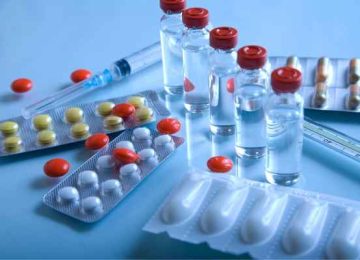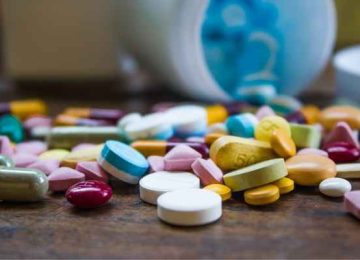

Quality Control Testing of Pharmaceutical Products
The pharmaceutical industry is responsible for producing medications that are used to treat various illnesses and medical conditions. Quality control testing of pharmaceuticals is an essential step to ensure the safety and efficacy of these products before they reach the market. These tests are carried out to verify the quality, purity, and potency of the ingredients used, to detect contaminants and impurities, and to ensure that the products meet regulatory standards. The testing process includes a combination of physical, chemical, and microbiological tests that are conducted at various stages of the production process. By conducting these tests, manufacturers can guarantee that the products they produce are safe and effective, thereby ensuring public health and confidence in the pharmaceutical industry.
Our Pharmaceutical Testing Services
Pharmaceutical quality testing involves a series of evaluations and assessments to ensure the safety, efficacy, and compliance of drugs and other pharmaceutical products. This testing plays a crucial role in ensuring the quality and reliability of the products before they are released into the market.
The types of quality testing in pharmaceutical products include:
- Identification Testing: This involves verifying the identity of raw materials and finished products using methods such as microscopy, chromatography, and spectrometry.
- Purity Testing: This involves determining the presence of any impurities in the drug substance or product. The impurities can include residual solvents, heavy metals, and other contaminants.
- Potency Testing: This involves determining the potency or strength of the drug substance or product, which is critical to ensuring therapeutic efficacy.
- Dissolution Testing: This involves evaluating the rate and extent of drug release from the dosage form into a solvent, which is an indicator of the product’s quality and performance.
- Stability Testing: This involves evaluating the product’s physical, chemical, and microbiological stability under specified storage conditions.
- Functionality Testing: This involves evaluating the product’s physical, chemical, and performance characteristics, such as appearance, weight, hardness, and dissolution rate.
- Microbial Testing: This involves evaluating the presence of harmful microorganisms in the drug substance or product, which can cause spoilage or illness.
- Strength testing: This test measures the amount of active ingredient present in the product and ensures that it meets the specifications outlined in the product label.
- Physical testing: This test measures the physical properties of the product, such as its appearance, colour, texture, and other sensory characteristics.
- Chemical testing: This test measures the chemical composition of the product and ensures that it meets the required specifications.
- Dissolution testing: This test measures the rate and extent at which a product dissolves in a solvent, which is important for oral dosage forms.
- Uniformity of dose testing: This test measures the uniformity of the active ingredient in a batch of product and ensures that each dose contains the same amount of active ingredient.
Raw material testing is a crucial aspect of quality control in the pharmaceutical industry. The objective of raw material testing is to evaluate the quality and purity of the components used in the production of pharmaceutical products. This testing is performed to ensure that the raw materials used in the production process are safe, effective and meet the regulatory standards.
The tests performed on raw materials may include identity testing, purity testing, characterization, and batch-to-batch consistency testing. Identity testing is used to verify that the raw material is the correct one, and it is done using techniques such as infrared spectroscopy, ultraviolet spectroscopy, and chromatography. Purity testing is used to determine the amount of impurities present in the raw material, and it is done using techniques such as high-performance liquid chromatography (HPLC), gas chromatography (GC) and inductively coupled plasma (ICP). Characterization of raw materials is used to determine the properties of the raw material such as solubility, pH, particle size and other physical properties. Batch-to-batch consistency testing is used to ensure that the raw material is consistent in its quality, regardless of the batch it comes from.
Raw material testing is an important step in the quality control process of pharmaceutical products, as it helps to ensure that the end product is of the highest quality and meets the regulatory standards. The results of raw material testing also help manufacturers to make informed decisions about the quality of the raw materials used in their products and make necessary changes to improve the quality of the final product.
Finished product testing refers to the process of evaluating the quality and safety of a product after it has gone through all stages of production and is ready for distribution and sale. In the pharmaceutical industry, this process is of utmost importance as it ensures that the products meet the standards set by regulatory agencies and are safe for consumption by patients. The aim of finished product testing is to verify that the product meets the specified quality attributes such as identity, purity, potency, stability, and uniformity, among others.
To ensure the quality and safety of pharmaceutical products, various analytical techniques are used during the finished product testing process. Some common tests include visual inspection, physical testing, chemical analysis, and microbiological analysis. The physical tests include measurements of size, shape, weight, and texture. Chemical analysis includes tests such as HPLC, UV-Vis spectroscopy, and dissolution testing to determine the purity and potency of the product. Microbiological analysis includes tests for the presence of harmful microorganisms such as bacteria, yeast, and mold.
In addition to standard tests, finished product testing may also involve stability studies. Stability studies are conducted to determine the shelf life of a product and to ensure that the product remains within its specified quality attributes over time. The results of finished product testing are used to make important decisions such as product release, storage, and distribution.
In conclusion, finished product testing is a crucial step in the pharmaceutical production process. It provides assurance that the product is safe, effective, and of high quality, and helps to maintain the integrity of the product during its shelf life.
Microbiological testing involves evaluating the presence of microorganisms such as bacteria, viruses, fungi, and yeast in the product, and determining if they meet the established standards for purity. Microbiological testing is essential for ensuring that the finished product is safe and effective for use, and to prevent the growth of harmful microorganisms that can cause infections or other health problems. The testing process can include a range of methods such as enumeration tests, presumptive tests, and confirmatory tests. These tests are conducted using a variety of techniques such as microbial culture methods, molecular methods, and immunoassays, among others. The results of the microbiological testing help to identify the presence of pathogens or contaminants in the product, and are used to make decisions about the release and stability of the finished product.
The following are microbiological parameters tested in pharmaceuticals as per IP, BP, USP:
- Total viable count (TVC): measures the total number of viable bacteria and fungi present in a sample.
- Sterility testing: determines whether a product is free of viable microorganisms that can cause harm.
- Endotoxin testing: measures the presence of pyrogens, which are substances produced by bacteria that can cause fever and other systemic responses.
- Bioburden testing: assesses the total number of viable microorganisms present in a sample, including bacteria, fungi, and yeasts.
- Environmental monitoring: checks for the presence of microorganisms in the manufacturing environment and helps to maintain the cleanliness and control of the environment.
- Microbial limit test: determines the maximum acceptable limit of a specific microorganism in a product.
- Identification of microorganisms: identifies the species and strains of microorganisms present in a sample.


